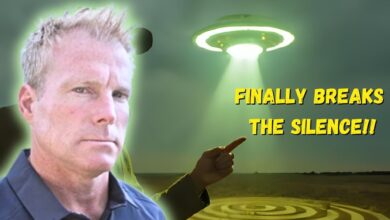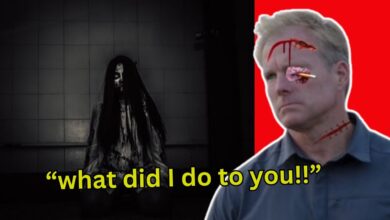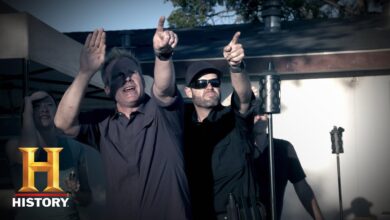
[Music]
In the heart of Transylvania, Romania lies an unusual forest that has been likened to Skinwalker Ranch in America—not only in the folklore of old, but also as the epicenter of a series of bizarre events and reports in more recent times.
The Hoia Baciu Forest itself is situated next to the city of Cluj, the unofficial capital of Transylvania, which is home to some incredible Gothic architecture.
There is a very old site situated in close proximity to the forest that was inhabited by natives around 8,000 years ago. It’s thought that something terrible happened to those that called this place home. Evidence suggests that a rival tribe had attacked and chased them into the forest, where they would come to meet their end.
Beginning in the 1960s and continuing until the 1990s, various excavation teams found all manner of things belonging to this tribe: the remnants of their homes, grave sites, and other such artifacts that painted the picture of something terrible happening to them.
The way in which the forest gained its name also has foreboding origins. It’s not completely clear when exactly it was named, but rough estimates suggest somewhere between the 13th and 15th centuries.
“Hoia” is the name of the area, and “Baciu” means shepherd in Romanian.
There are mentions in the folklore warning about entering this place. One lone shepherd, known as a great outdoorsman, had apparently ignored these warnings. He, along with his flock of 200 sheep, strayed and navigated toward the edge of the woodland.
As he got deeper into the forest, the sounds of life reportedly stopped, replaced by a stillness and silence. Birds stopped chirping. The leaves stopped rustling. He saw a clearing through the trees—free of vegetation and a perfect circle where nothing grew.
That day, the shepherd and his flock vanished.
Some versions of the story say that around the time he went missing, villagers heard a low humming sound coming from the forest and associated it with his disappearance.
There’s no real conclusion to the story—only that he and his flock did not return. The villagers mounted a respectable search effort, but his whereabouts, nor his remains, were ever discovered.
This is thought to be the origin of the forest’s name.
Many locals believe something otherworldly happened. Others suggest a more grounded theory: perhaps banditry was to blame. During that time, lawless attacks were common in remote areas, and 200 sheep would have been a valuable prize.
Interestingly, the clearing where nothing grows does actually exist. Locals call it Poiana Rotundă, or the “Round Clearing.” It’s located in the southwestern section of the forest, around 250 to 300 feet across, and remains devoid of plant life. It is surrounded by lush greenery, which only adds to the mystery.
Attempts have been made to understand why nothing grows there, but no solid explanation has been found.
On August 18th, 1999, a group of five hikers—long-time friends—decided to explore the area. It was summer and getting dark, but they continued into the forest. As they neared the clearing, they noticed an abrupt drop in temperature, localized to that specific spot.
They put on extra layers and pressed on. Soon after, the compass began spinning erratically. Some hesitated, but they continued.
Next, the batteries on their phones started depleting much faster than expected.
Then, they heard sounds in the underbrush—what began as wildlife turned into heavy, deliberate footsteps all around them. They described feeling dread, as though being encircled. They shone flashlights into the trees but saw nothing definitive.
They also heard muffled voices in the distance, even though they hadn’t seen anyone else that day. Spooked, they decided to leave. Oddly, only one flashlight was working.
In the following days, they shared their experience with locals and the press, which stirred more interest in the forest.
A second group of locals went in but experienced nothing unusual.
Some experts suggested air pressure changes might explain the temperature drop, and the rest could be psychological responses to the forest’s isolating atmosphere. Still, the hikers were convinced something more was at play.
Another story involves a man who briefly separated from his group to photograph the forest’s twisted trees. He suddenly felt an overwhelming wave of panic. He heard a woman screaming right beside him, though no one was there.
Terrified, he ran back to his group. They hadn’t heard anything.
A small group of forest maintenance volunteers once camped in the forest. During the night, two woke to footsteps. Expecting to see a deer, they found nothing. Later, they heard more footsteps—again, no one was there.
The third time, the sound was louder—like a horse galloping just outside their tents. Everyone was awake now, confused and unnerved. They left at dawn.
Disappearances in the forest aren’t limited to the shepherd. The forest has developed a reputation for people going missing, sometimes in Missing 411-style cases.
One report tells of a young girl who wandered away while following a butterfly. Her parents lost sight of her, searched frantically, and brought in authorities. No trace was found.
Years later, she was reportedly found in the forest, with no memory of the time she was missing. It’s unclear how true this story is.
Similar stories abound: people disappear for what feels like minutes to them, but they’re gone for days in reality. One woman reunited with her group after being “gone a few minutes,” though her friends had been searching for hours.
Such stories lack names and dates, making verification difficult. Newspaper archives don’t turn up much, but that doesn’t mean they didn’t happen—many local records aren’t digitized or are in Romanian.
Visitors often report amplified emotions in the forest. Happy people feel euphoric. Sad visitors feel lower. Some hikers report nausea and intense headaches.
People also return home with mysterious scratches or bruises they don’t remember getting.
The forest’s strange tree shapes—bent, spiraling, and twisted—also interest scientists, but explanations remain elusive.
The Round Clearing continues to puzzle researchers. Soil samples show nothing conclusive. Locals say it’s been the same for over 400 years.
In 1953, biologist Alexander Sift studied the forest. He and his father reported strange sounds—like teeth chattering all around them—and overwhelming paranoia. They believed they were being followed and cut their trip short.
The forest gained more attention in 1968 when military technician Emil Barnea captured a strange object hovering over the clearing. He took a photo, which circulated widely. It led to him losing his military job, likely due to the political climate of the time.
In 1974, chemist Adrian Pătruț, interested in psychology, investigated reports of strange phenomena. He, too, saw a weird light that moved erratically and caused feelings of dread.
He hypothesized that infrasound—low-frequency sound waves—might explain the experiences. Infrasound can affect internal organs, induce anxiety, nausea, disorientation, and even hallucinations.
While infrasound might explain individual experiences, it may not fully explain group phenomena like multiple people hearing the same thing at the same time.
Still, the theory is compelling. Some haunted attractions even use infrasound to intensify fear.
In the end, whether due to natural phenomena or something more supernatural, the Hoia Baciu Forest remains a place of fascination and mystery.








